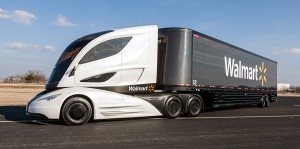 The Mid-America Trucking Show (MATS) in Louisville, KY was a wonderful trip down Memory Lane and a look into the future, all wrapped-up in four quick days. I got to hang out with my dear friends Heather and Roger Hogeland, as well as my young photographer friend Ciara Sleeth, and it was awesome. This was the first time I was really able to go to this show and take everything in. Going to several press conferences (thank you, Heather), I got a unique look into the future of trucking, and I thought I might share some of what I found. I have said before that I am too “old-school” – I am a dinosaur – I am going down this information superhighway like everyone else, but I am kicking and screaming the entire way!
The Mid-America Trucking Show (MATS) in Louisville, KY was a wonderful trip down Memory Lane and a look into the future, all wrapped-up in four quick days. I got to hang out with my dear friends Heather and Roger Hogeland, as well as my young photographer friend Ciara Sleeth, and it was awesome. This was the first time I was really able to go to this show and take everything in. Going to several press conferences (thank you, Heather), I got a unique look into the future of trucking, and I thought I might share some of what I found. I have said before that I am too “old-school” – I am a dinosaur – I am going down this information superhighway like everyone else, but I am kicking and screaming the entire way!
Celebrating their 75th Anniversary this year, Peterbilt had a large display at the show and an amazing press conference the day before it opened. The way trucks are being built today, for this old driver, it was nice to hear a little bit of history and to learn a few new things, as well. In the beginning, there were 50 employees and only one truck was built every three days (today, they can build almost 100 a day). The Peterbilt oval emblem was debuted in 1953, and I am embarrassed to say that it was here that I learned that the hood-pull on top of every Peterbilt grill is the Peterbilt bird. Looking closely for the first time, I can totally see why it is called a “bird” but I honestly never saw it before.
 One day soon, aerodynamic trucks are going to be the only ones produced, and I wouldn’t be surprised if they become the only ones allowed on the road, too. The big square hoods of the trucks that I feel will forever be the “classics” will be gone. The days of the “9’s” will be history – two of these models are already gone, and the last one will be on the way out soon. Sadly, the way I see things going, one day the 359s, 379s and W-900s will be in museums, and not on the roads that they dominated for so many decades.
One day soon, aerodynamic trucks are going to be the only ones produced, and I wouldn’t be surprised if they become the only ones allowed on the road, too. The big square hoods of the trucks that I feel will forever be the “classics” will be gone. The days of the “9’s” will be history – two of these models are already gone, and the last one will be on the way out soon. Sadly, the way I see things going, one day the 359s, 379s and W-900s will be in museums, and not on the roads that they dominated for so many decades.
The drivers coming into this industry today have grown up with all the gadgets and they demand all the latest technology – and they are going to get it in a big way. The trucks of tomorrow are beginning to take on a life of their own. Today, computers run just about every system and engines are “talking” to the transmissions, and vice-versa, mostly to achieve better fuel efficiency. This is all good when everything is working, but what happens when something goes wrong?
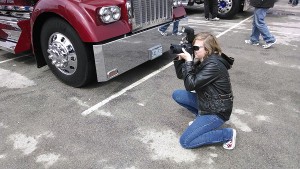 Back in the day, you could improvise and limp a wounded truck to the shop of your choice and save a lot of money. Now, if your automatic transmission, for example, stops working, you are down and calling a hook. I asked several different people what happens if the “brain” of the truck dies while going down a mountain, and the answer was, “That can’t happen,” or, “You can manually override it.” Well, forgive me for being so doubtful, but I would like to borrow a phrase from a dear friend of mine who noted, “They also said the Titanic couldn’t sink!”
Back in the day, you could improvise and limp a wounded truck to the shop of your choice and save a lot of money. Now, if your automatic transmission, for example, stops working, you are down and calling a hook. I asked several different people what happens if the “brain” of the truck dies while going down a mountain, and the answer was, “That can’t happen,” or, “You can manually override it.” Well, forgive me for being so doubtful, but I would like to borrow a phrase from a dear friend of mine who noted, “They also said the Titanic couldn’t sink!”
When I first got on the road running long haul, a friend told me, “When you get in that seat, you become part of the truck.” Yes, you do. And I still feel that way. But with everything being “automatic” these days, it will be harder for that symbiotic relationship to occur. Instead of listening to your engine for problems and deciding when and how to shift, now the truck will tell you when there is a problem and do the shifting for you. It isn’t hard to imagine a time when drivers will no longer be necessary in trucks, but we are not there – yet. I kept hearing the word “uptime” and it made me think that the cause of this was too much “downtime” – but whose fault is that? Most of the manufacturers were talking about building more repair shops and having longer hours, and I guess that is a good thing, but it doesn’t seem to address the real “downtime” problem.
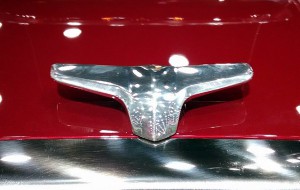 Mack’s GuardDog Connect plugs your truck into a 24/7 network of support staff and repair centers. If something happens to your truck on the road, GuardDog Connect detects the problem instantly and calls it in – usually, before you can tell that anything’s wrong. If the issue needs immediate attention, it contacts Mack’s OneCall customer center with the fault code. A team of experienced technicians evaluates the fault code and identifies the exact issue and repairs needed. The driver is then instructed where to take the truck. Upon arrival, the technicians can get right to work since OneCall, through MACK ASIST, has already forwarded all of the necessary information to the shop, including any parts needed, service instructions and diagnostic information, to get the problem fixed and get you back on the road faster.
Mack’s GuardDog Connect plugs your truck into a 24/7 network of support staff and repair centers. If something happens to your truck on the road, GuardDog Connect detects the problem instantly and calls it in – usually, before you can tell that anything’s wrong. If the issue needs immediate attention, it contacts Mack’s OneCall customer center with the fault code. A team of experienced technicians evaluates the fault code and identifies the exact issue and repairs needed. The driver is then instructed where to take the truck. Upon arrival, the technicians can get right to work since OneCall, through MACK ASIST, has already forwarded all of the necessary information to the shop, including any parts needed, service instructions and diagnostic information, to get the problem fixed and get you back on the road faster.
Similar to Mack’s GuardDog Connect system, International’s new OnCommand Connection is, in their words, transforming the trucking industry for the better. Using the connection of virtually any telematics provider, it gives access to real-time vehicle health for every truck in the fleet, prioritizes repair and maintenance work, and gets your truck back on the road a little quicker. In emergencies, I can see where all of these systems could be so beneficial in getting help to a driver (much like the On-Star system in cars). If something happens and there is no one there to help, or if a truck and/or trailer is stolen, these “connected” systems would come in handy, for sure.
The new Greenhouse Gas regulations were another hot topic of conversation. I think these regulations are fueling most of the changes we are seeing today. With all of this communication and automatic control going on, I could see how one day, not too far down the road, trucks will automatically slow down to the speed limit (I recently bought a GPS and it somehow knows the speed limit of every road I am on). It only makes sense that one day, soon, the truck will not be allowed to exceed the posted speed limit. I thought this might be a few years away, but I was recently told by a truck salesman that it is already here, in a way. When specing a new truck, if you do not click to change the 65 mph limit when ordering, your truck will come set to that limit and there is no way to change it until after the rig has 500,000 miles on it.
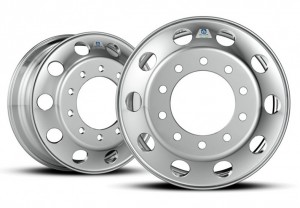 On a brighter note, literally, Alcoa introduced a new aluminum wheel at MATS. Producing the first aluminum heavy duty wheel in 1948, Alcoa also developed the first hub-piloted aluminum rim in 1980. In 2001, the 3rd generation of the Dura-Bright rim was introduced. Now, their latest offering, the Ultra ONE wheel, is the lightest available, thanks to their new MagnaForce alloy, which is 17% stronger than existing alloys. This is the first new alloy in the wheel market since 1968. Their new MagnaForce Ultra ONE wheel weighs only 40 pounds, which is five pounds lighter than its predecessor. These rims are now available to OEM’s for new orders, and are available in all of the popular finish options including Mirror Polish, Clean Buff and Dura-Bright.
On a brighter note, literally, Alcoa introduced a new aluminum wheel at MATS. Producing the first aluminum heavy duty wheel in 1948, Alcoa also developed the first hub-piloted aluminum rim in 1980. In 2001, the 3rd generation of the Dura-Bright rim was introduced. Now, their latest offering, the Ultra ONE wheel, is the lightest available, thanks to their new MagnaForce alloy, which is 17% stronger than existing alloys. This is the first new alloy in the wheel market since 1968. Their new MagnaForce Ultra ONE wheel weighs only 40 pounds, which is five pounds lighter than its predecessor. These rims are now available to OEM’s for new orders, and are available in all of the popular finish options including Mirror Polish, Clean Buff and Dura-Bright.
Heather and I signed up for a ride and drive in a Freightliner Cascadia, but I have to say, we both had our minds made up before we got in the truck. Jeff was the brave man to take both of us on our test drive. I made a promise to Jeff that I would be nice in my review of the truck, and I will try to keep my promise. Going a max of 30 mph in a heavy traffic situation is not really a fair test of what the truck is really like. But, in the situation we were in, driving around the perimeter of the Expo Center, I felt that being in 8th gear by the time I was going 20 mph was too high, and that the down-shifting from there to a stop was rough. I will say, though, that the space and storage inside the cab and bunk is awesome, especially if you are a driver who doesn’t get home very often and have to carry “everything” with you.
Outside the Expo Center, in the parking lot, the PKY Truck Beauty Championship was celebrating its 25th year. Attending the awards ceremony on Saturday morning, the presentation was perfection – and it sure brought back a lot of memories for me of when I used to compete. Cheri Kimball took most of the pictures for the slide show at the ceremony and for the printed “Championship Report” that was handed out for free at the end of the show. This beautifully-printed book showcased all of the trucks and all of the drivers that participated in the show, along with any awards they had earned. Cheri was quick to give 10-4 Magazine’s own Erik Sieben and Dan Linss credit for the light show shots, along with a bunch of help from Mike Horan at RoadWorks, as well.
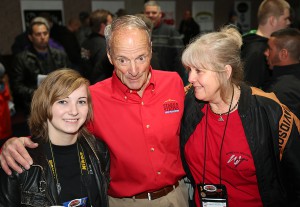 Looking at the very-futuristic Walmart concept truck on display at the show, I could totally picture an alien as the driver. We can’t imagine what trucks will look like 20 years from now, but they may be a lot more like this wildly-aerodynamic rig than we think. I can remember back in 1985 when Kenworth came out with the T-600, nicknamed by many drivers as the Anteater. Many thought it was the ugliest thing that had ever been done to a truck – and I was one of them. To be fair, I went on to drive three “Anteaters” and they were all good trucks that actually handled better on slick roads than the W-900 I owned and loved so much.
Looking at the very-futuristic Walmart concept truck on display at the show, I could totally picture an alien as the driver. We can’t imagine what trucks will look like 20 years from now, but they may be a lot more like this wildly-aerodynamic rig than we think. I can remember back in 1985 when Kenworth came out with the T-600, nicknamed by many drivers as the Anteater. Many thought it was the ugliest thing that had ever been done to a truck – and I was one of them. To be fair, I went on to drive three “Anteaters” and they were all good trucks that actually handled better on slick roads than the W-900 I owned and loved so much.
None of us can stop the changes from coming. I have doubts about some of the things I am seeing in the pipeline, but progress will continue to march on, whether we like it or not. My biggest concern is the declining skills of the drivers – with the truck making many of the decisions and doing much of the work, skilled drivers will be needed less and less – and that is a scary thought. I might be too “old-school” but I am doing my best to keep up, because I know that if I don’t, I will just become road kill on the side of the ever-changing information superhighway – and I am not ready to give up, just yet!

1 Comment
You right, you cant stop the changes especially if no one tries . Why can the trucking industry get together and fight, or at least slow down the government from shoving these ridiculous changes down our throats.
I guess we re all just sheep going to the slaughter because no one will stand up